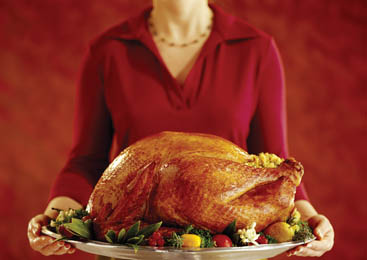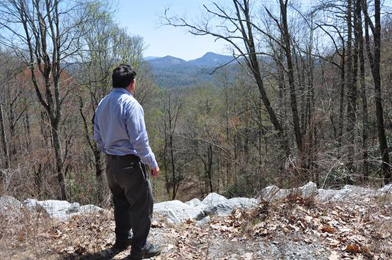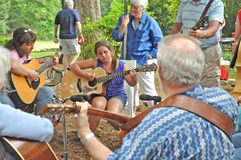Category Archives: Lifestyles
Thanksgiving Leftovers

Turkey day is over, but you still have enough food
to feed an army. Use these idea to help you get
the most out of your holiday.
By Olivia Fowler
For the Courier
ofowler@thepccourier.com
So the Thanksgiving feast has been eaten, the company has departed, the house is a shambles and you don’t feel like cooking.
You have options — freeze your leftovers in usable portions, go out to eat or recycle the leftovers into totally new meals.
Although it’s wonderful on Thanksgiving, nobody wants to repeat the same meal over and over
Back to School 2014

As the summer winds down, it’s time for parents and students to begin the transition back into school mode. The first day of classes in Pickens County is set for Aug. 19, but getting a head start on school year preparation is a key to success.
How to help kids transition back to the classroom

As a new school year draws nearer, parents can employ several strategies to help their kids readjust to the rigors of the classroom.
The dawn of a new school year is an exciting time. Kids may not want to say goodbye to days spent lounging by the pool, but such disappointment is often tempered by the prospect of returning to school with friends.
For parents, getting kids ready for a new school year is about more than updating their wardrobe or organizing carpools with fellow parents. Reacclimating kids to the routine of school after a relaxing summer is a significant undertaking, and the following are a handful of ways for parents to get a head start as the school year draws closer.
• Establish a routine over the last few weeks of summer. Summer vacations typically lack the structure of the school year, and that lack of structure can help kids unwind and
The grand mystery in Cashiers Valley

Photos courtesy Dr. Thomas Cloer Jr.
Dr. Thomas Cloer is pictured looking out over the wilderness of Whiteside Cove, where Hawkins went missing more than 80 years ago.
A well-known mountain preacher’s 1930 disappearance went unsolved for nearly two decades and gave rise to a phrase some still use today.
By Dr. Thomas Cloer Jr., Special to The Courier
I saw an obituary recently for Mary Hawkins Bryson of Cashiers Valley, N.C. It reminded me of a mystery that practically every resident of Jackson County, N.C., and many in Pickens and Oconee counties in South Carolina knew about early in the 20th century.
Mary Hawkins Bryson was the last surviving member of the family of Wade and Elsie Hawkins. Mary’s grandfather was the legendary Methodist preacher William Thomas (Tom) Hawkins.
Tom Hawkins was born before the Civil War, in 1856. He married Mary Emily Bradley in 1878, and they soon had a family of three boys and two girls. The Tom Hawkins household was a prominent family in Cashiers Valley and lived across the road from Cashiers Lake. At one time or another, the Hawkins family members were neighbors of both sets of my grandparents.
One son of Tom and Mary Hawkins was William Wade Hawkins. Wade married Elsie Monteith, and they and their family were neighbors of my mom and her family. Mom, my grandmother Bonnie Baumgarner, my step-grandfather Roy B. Baumgarner and Mom’s siblings, Fred Moody, Lucy Moody and Maxine Moody, lived just outside Cashiers Valley at the head of the Horsepasture River that flows into Lake Jocassee.
I remember my mom telling about Grandmother Bonnie making Elsie Hawkins a cake and apron for Christmas. While I can’t remember Wade Hawkins, as he died in the 1950s, I can remember one of Tom Hawkins’ youngest daughters. Her name was Genovieve Hawkins Wright, and everyone called her “Vee.” I knew her because she was the postmaster in the post office at Cashiers Valley. She was to play a major role in the mystery.
Even as a very small child, I can remember Mom and Dad talking about the grand mystery involving the Hawkins family. One evening, Tom went to find the family cow and return it to the homestead. When darkness arrived that evening — March 18, 1930 — and Tom, in declining health and 73 years old, did not return, the alarm went out to all the neighbors.
My dad was not yet a teenager when his neighbor’s disappearance began the mystery. Mom had not started elementary school in Cashiers Valley. She and Dad later married, moved away, and my brother and I were born. Our family then moved back to Cashiers, and the mystery still continued.
“Pull a Tom Hawkins”
Mom’s father died when she was three years old. My grandmother, Bonnie, married Roy B. Baumgarner. He was a huge gentle man, who, like many of the mountaineers of Appalachia, found moonshine whiskey to his liking. When the mountain dew had its effect, and my grandmother scolded Roy B. for indulging, he often said, “Bonnie, sweet dear, one of these days I just might pull a Tom Hawkins.” He never got the chance. Roy B. died young, at 53. What did he mean by “pull a Tom Hawkins?”
I have spent many hours trying to answer that question. I have traveled many miles, researched many documents and have done extensive interviews. My mom, Grace Moody Cloer, and her sister, Maxine Moody Kinsey, are two of the people still living from Cashiers Valley who were alive when the mystery began that March evening in 1930. At three o’clock that afternoon, Tom Hawkins went toward Timber Ridge below the dam of Cashiers Lake to retrieve the family cow. That was 84 years ago. My mom, who will be 90 years old on her next birthday, was just 5 years old when the mystery began. She remembers her stepfather leaving to help hunt for Tom.
Timber Ridge, below Cashiers Lake, leads to an incredible wilderness beneath Whiteside Mountain. Cashiers Lake is the beginning of the mighty Chattooga River that flows 57 miles through some of the roughest, wildest terrain left today in the Southern Appalachians. Whiteside Cove is an expansive wilderness area underneath Whiteside Mountain through which the Chattooga flows. Whiteside Mountain contains the highest precipices this side of the Rocky Mountains and is an incredible mountain of rock that can be seen for many miles from many perspectives around Cashiers Valley.
My dad’s sister, Ethel Cloer Mills, lived in Whiteside Cove for most of her life. I can remember with great fondness my visits to Aunt Ethel and Uncle Dallas Mills’ farmstead on the banks of the Chattooga below Cahiers Lake. I would often stay all day and help on the farmstead at planting time. I became familiar with the rugged, dangerous terrain very early in my life.
My dad first fished these turbulent waters in the 1920s and 30s. My brother, Nat, and I fished the Chattooga waters of Whiteside Cove from the 1950s to this 21st century, he more than I, because he had a home on Whiteside Mountain in the 80s and 90s. We caught all three species of trout there. We both remember the beautiful outside speckles and the salmon-colored meat of the beautiful native brook trout below Cashiers Lake dam, and the very rugged terrain downstream. We can readily understand why the mystery of the disappearance of Tom Hawkins continued for decades after he entered such a wilderness.
The Search Expands
Tom Hawkins was last seen alive in the Timber Ridge area below Cashiers Lake dam at approximately 5:30 p.m. in the afternoon of March 18, 1930. When daylight arrived the next day after Tom disappeared, almost every able-bodied man in Cashiers Valley was helping with the search. Tom was a mountain man, a woodsman, an avid hunter and fisherman. According to the newspaper of that day, The Jackson County Journal, Hawkins was familiar with the wilderness he entered, “perhaps better than anyone.” That same article mentioned his former hunting of rattlesnakes in the wilderness that he entered just before nightfall.
Nine days after his disappearance, according to a later article in the same newspaper, hundreds were still searching for the man. The searchers included men from Pickens and Oconee Counties of South Carolina, and from Macon County, Sylva, Glenville and Cullowhee, N.C., and the surrounding territories. At one point in the search, 400 men were combing the area, all to no avail. Hawkins was familiar with many small caves in Whiteside Cove, and the searchers thought these caves to be a logical place for him to take refuge from the harsh cold at night.
Life Goes On
Herbert Hoover was president of the United States when Tom Hawkins disappeared. After three years passed, Franklin Delano Roosevelt became president in 1933. Still, there was no hint of what happened to Hawkins. FDR introduced The New Deal and initiated the Work Projects Administration (WPA) and the Civilian Conservation Corps (CCC). Both assisted the poor of Southern Appalachia. The 21st amendment ended prohibition. In 1937, Look Magazine came on the scene. In 1939, President Roosevelt became the first U.S. President to make a speech on television at the World’s Fair in New York City. In 1940, Oldsmobile became the first car to have an automatic transmission.
My mom and dad left Cashiers for a day, and eloped, Mom being underage, to Walhalla, where they were married in the house of the Justice of the Peace, a Mr. Gillespie. It had been 10 years since the mystery began when they married in 1940, and still there was no clue as to what happened to Tom Hawkins.
Our family moved to Clay County, N.C., near Shooting Creek, with Gennett Lumber Company. Roosevelt was elected to a record third term as president. In 1941, there was the attack on Pearl Harbor by the Japanese. My brother, Nat, was born that year. In 1945, I was born, and three days later on April 12, 1945, Roosevelt died at Warm Springs, Ga.
In 1945, when vice president Harry Truman took office after Roosevelt’s death, he ordered that atomic bombs be dropped on Hiroshima and Nagasaki, Japan. In 1947, Meet the Press appeared on American television. In 1948, The Texas Star Theater, starring Milton Berle, was the first major successful program of that type on American television. Also in 1948, our family moved back to Cashiers Valley from Clay County.
After all these landmarks in American history, 18 years and three months after the well-known Methodist minister’s disappearance, there was a major development in the mystery.
Major Development
On June 18, 1948, two mountaineer loggers, the White brothers, working in a remote section of Whiteside Cove under Whiteside Mountain, found what they thought might be a human skull. The White brothers took the find to a medical doctor in Cashiers, who said it was indeed a human skull. Ernest White and his brother, unnamed in documentation, then returned to the very dense, remote laurel thicket in Whiteside Cove where they had found the skull and began to rake away leaves.
There, to their amazement, was a skeleton, intact, even with shoes still on the feet. There, also, was a billfold, pocketknife, watch and a set of false teeth. There was a tree of good size that had grown between the leg bones, and the skeletal remains were all there.
The items found were taken to Genovieve Hawkins Wright, the postmaster daughter of Tom Hawkins. Genovieve immediately identified the items as belonging to her father. After 18 years and three months, the mystery of what had happened was solved — to an extent. The skeletal remains were found on a Thursday. To help the community attain closure, a funeral was held in Cashiers Valley United Methodist Church on the following Sunday, June 21, 1948, with Rev. W.N. Cook officiating.
My mom and Aunt Lucy Moody Moore were in attendance. Tom Hawkins was then finally laid to rest in Cashiers Valley Zachary Cemetery in the Chattooga Woods area near High Hampton Resort. A huge marker is erected there in the lower cemetery to Rev. W.T. Hawkins, 1856-1930, “The Good Shepherd of the Hills.” His remains were actually laid to rest in the upper cemetery near his family. His tombstone there is clearly marked.
Conclusion
Well, what does it mean to “pull a Tom Hawkins?” There are still many questions. One question still in my mind is not “What happened?” but “Why?” Speculation has been rampant ever since Genovieve Hawkins Wright identified the items. Some have said Tom Hawkins’ father died in a similar fashion. There is some credence to the theory, I think, that Tom Hawkins wanted to die in this fashion.
I, too, am a woodsman, hunter and fisherman, and often find myself alone and many miles from any human activity. I must say in complete honesty that I find being alone in this manner enthralling and invigorating. It inexplicably gives me an emotional high unequalled in my human experience. I really can and do commune best with The Great Spirit during these times; I am genuinely doing what I love. I also believe a true wilderness psyche helps put any silliness and pettiness that may occur in our daily mundane lives in much better perspective.
My dad’s brother, W.A. Cloer, Sr., also a mountain minister of fame, died alone while hunting in a wilderness area in the Nantahala Mountains of Macon County, N.C. A search party, led by his son, W.A. (Buddy) Cloer, Jr., was successful in finding his body. So, I know my experiences into wilderness make my wife and family feel most uncomfortable. They fuss at me regularly now as I go alone into the most rugged, remote wilderness areas to fish or hunt. I also know that my family, friends and other loved ones are those I must consider in this aspect of my being; I understand that. Their feelings of angst about my possible future demise were enough for me to go ahead and make a covenant of sorts with them.
“OK! I promise!” I told them. “I won’t ever — intentionally — pull a Tom Hawkins.”
Dr. Thomas Cloer Jr. is Professor Emeritus, Furman University. He received his undergraduate degree with honors from Cumberland College in Kentucky, his Master’s degree from Clemson, and his Ph.D. from the University of South Carolina.
Big League World Series brings baseball to Easley for 14th year

By Ben Robinson
Staff Reporter
brobinson@thepccourier.com
 With first pitch set for this afternoon, the Big League World Series returns to Easley for the 14th year in a row to determine best 16-18-year-old baseball team in the world.
With first pitch set for this afternoon, the Big League World Series returns to Easley for the 14th year in a row to determine best 16-18-year-old baseball team in the world.
The field for the tournament, held at the J.B. “Red” Owens Complex, was finalized over the last week as regional tournaments wrapped up around the U.S. and the world.
The host team, S.C. District 1, is one of two teams that received an automatic bid into the tournament.
Trying to win its first series crown since 2007, the host
Monumental Legacy: Father, son carry on family tradition

Photos by Nikki Rutledge/For The Courier
Sid Alexander, who learned the trade from his father, Beattie, in 1965, demonstrates the carving of a monument at Alexander Granite and Marble at 6959 Calhoun Memorial Highway in Easley. Below left: The intricate design work, carving and contouring are what Alexander believes makes his company’s work “unique.” Alexander operates the company with his son, Nic. Below right: A trip to the sand-blasting room in the company’s workshop is one of the crucial steps in the creation of a monument.
By Nikki Rutledge For The Courier
news@thepccourier.com
Some may think doing the same thing every day for 50 years is a mundane way to go through life, but not Sid Alexander.
His father, Beattie Alexander, founder of Alexander Granite and Marble, taught Sid the stone masonry trade in 1965 when he was just 13 years old, and he has spent his life honing his craft.
The years have been spent carving and shaping granite or marble monuments by hand with a hammer and chisel, sand-blasting the inscriptions on them by hand, hand-carving designs on almost every one and enjoying every
June is Great Outdoors Month

Celebrating our natural resources
Washington, D.C. — The nation’s top elected officials don’t seem to agree on much — but they completely agree that Americans need to spend more time in the nation’s parks, forests, refuges and other public spaces.
Proclaimed by the President and each governor and celebrated annually in June, Great Outdoors Month is a bipartisan celebration of America’s abundant and diverse outdoor recreation resources and the passion Americans have for
Sounds of the southern appalachians

Ella Hennessee jams with her instructor, Susan Ware-Snow.
Locals leading the way in
preserving musical traditions
By Dr. Thomas Cloer, Jr., Special to The Courier
I have a certificate, proudly displayed on my wall, from the Stamps-Baxter Normal Music School, verifying that “Tommy Cloer after having passed a reasonably rigid examination and by good deportment is entitled to this Theory Grade Certificate, June 8th –June 26th, 1953.”
The music school sessions were attended by all ages, children and adults. The teachers informed my parents that I was the youngest ever to pass their exam on the Rudiments of Music. I had just finished the second grade. I also have on my “Books in Use” shelf a 1939 song book titled “Favorite Songs and Hymns: Shape Notes,” compiled by Virgil O. Stamps and J.R. Baxter and published by Stamps-Baxter Music and Printing Co., Inc., which had thriving businesses in Dallas, Texas, Pangburn, Ark., and Chattanooga, Tenn. Suffice it to say the company “done real good” in Southern Appalachian churches.
Sacred Appalachian music is central to many of us that as children had those emotional, life-lifting sounds implanted in our minds. I remember vividly when this music began to move out of the churches in Southern Appalachia and began to be used as entertainment, as well as being used for worship. This was, I think, a
Father’s Day — A history

On July 19, 1910, the governor of the U.S. state of Washington proclaimed the nation’s first “Father’s Day.” However, it was not until 1972, 58 years after President Woodrow Wilson made Mother’s Day official, that the day became a nationwide holiday in the United States.
MOTHER’S DAY: INSPIRATION
FOR FATHER’S DAY
The “Mother’s Day” we celebrate today has its origins in the peace-and-reconciliation campaigns of the post-Civil War era. During the 1860s, at the urging of activist Ann Reeves Jarvis, one divided West Virginia town celebrated “Mother’s Work Days” that brought together the mothers of Confederate and Union soldiers. In 1870, the activist Julia Ward Howe issued a “Mother’s Day Proclamation” calling
How to make Father’s Day more enjoyable for Dad
Dad gets to be king of his castle at least one day during the year. Come mid-June, children near and far scramble for ideas to treat their fathers to a special day and award him with gifts for being a role model, provider and confidante. Father’s Day activities should be centered around Dad’s interests. With that in mind, the following are some ideas to honor Dad or another special man in your life.
• Sports Sunday: If Dad is a sports fan, his idea of spending a fun-filled afternoon very well may be cheering on his favorite players. Whether your father enjoys golf, tennis, baseball, soccer, or another sport like hunting or fishing, chances are there is a television broadcast on that you can watch together. Otherwise, you can surprise Dad by purchasing tickets to a sporting event and making a day of it at the ballpark.
Great gift ideas for Dad
Father’s Day is right around the corner and that means many children, spouses and other family members will be scrambling to locate the perfect gifts for the men in their lives.
Put away those coupons for neckties and remote control caddies. There’s a good chance Dad wants something a little less cliche and more in tune with his interests. If you think carefully about gift ideas, there’s bound to be something that will be a perfect fit.
Sports
If Dad follows a particular team or sport, gifts inspired by his love of a favorite team are a surefire bet for success. Team jersies, game memorabilia, tickets to the next at-home game, or an expanded satellite dish or cable TV sports programming package

























